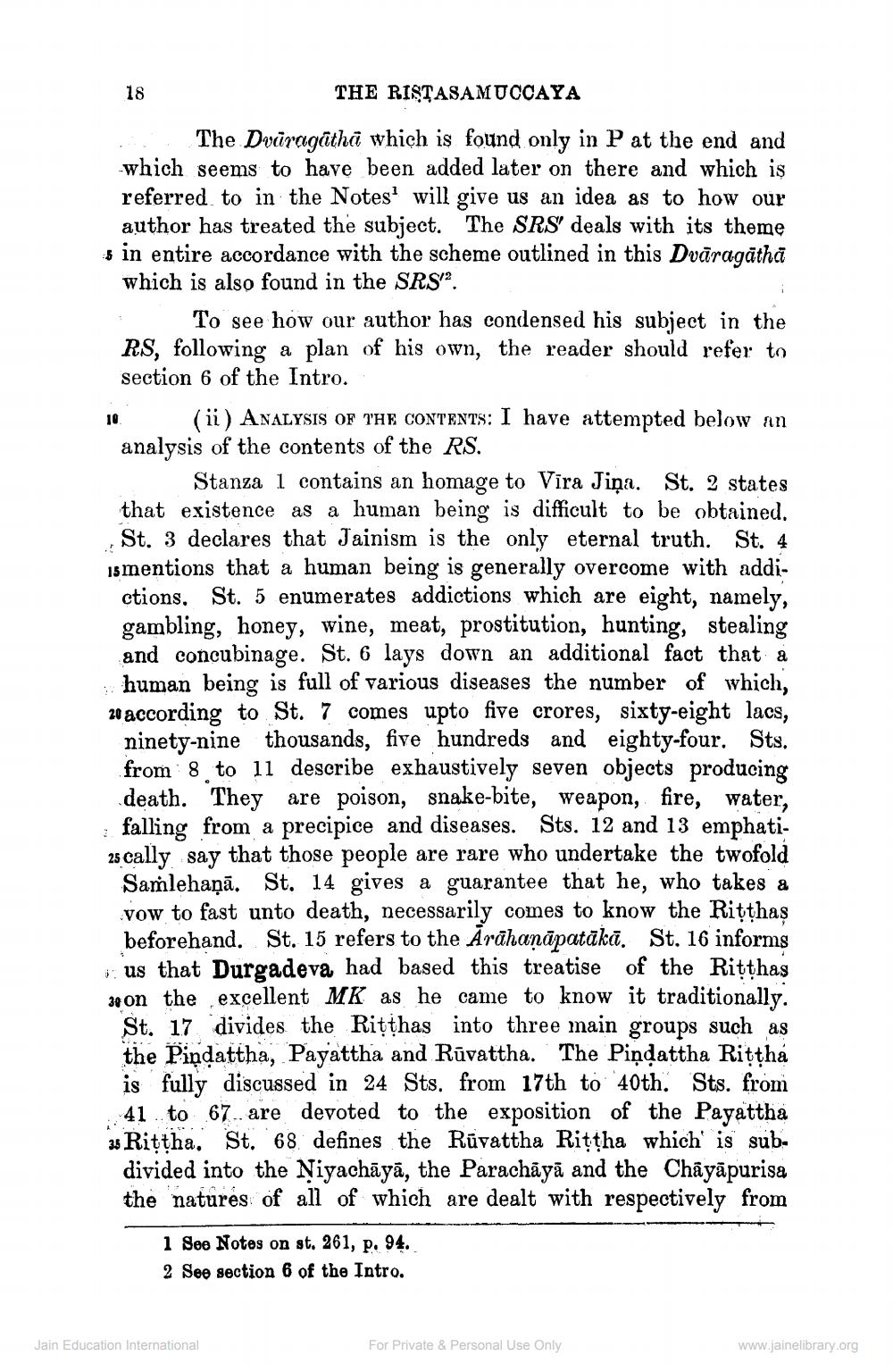________________
18
THE RISTASAMUCCAYA The Dvaragatha which is found only in P at the end and which seems to have been added later on there and which is referred to in the Notes will give us an idea as to how our author has treated the subject. The SRS' deals with its theme s in entire accordance with the scheme outlined in this Dvāragatha which is also found in the SRS'.
To see how our author has condensed his subject in the RS, following a plan of his own, the reader should refer to
section 6 of the Intro. 10. (ii) ANALYSIS OF THE CONTENTS: I have attempted below an analysis of the contents of the RS.
Stanza 1 contains an homage to Vira Jiņa. St. 2 states that existence as a human being is difficult to be obtained. St. 3 declares that Jainism is the only eternal truth. St. 4 15 mentions that a human being is generally overcome with addictions. St. 5 enumerates addictions which are eight, namely, gambling, honey, wine, meat, prostitution, hunting, stealing and concubinage. St. 6 lays down an additional fact that á human being is full of various diseases the number of which, 20 according to St. 7 comes upto five crores, sixty-eight lacs, ninety-nine thousands, five hundreds and eighty-four. Sts. from 8 to 11 describe exhaustively seven objects producing
death. They are poison, snake bite, weapon, fire, water, : falling from a precipice and diseases. Sts. 12 and 13 emphati25 cally say that those people are rare who undertake the twofold Samlehaņā. St. 14 gives a guarantee that he, who takes a vow to fast unto death, necessarily comes to know the Ritthas beforehand. St. 15 refers to the Ārāhaņāpatākā. St. 16 informs us that Durgadeva had based this treatise of the Ritthas 34 on the excellent MK as he came to know it traditionally. St. 17 divides the Ritthas into three main groups such as the Piņdattha, Payattha and Rūvattha. The Piņdattha Rittha
is fully discussed in 24 Sts. from 17th to 40th. Sts. from . 41. to 67. are devoted to the exposition of the Payattha 35 Rittha. St. 68. defines the Rūvattha Rittha which is subdivided into the Niyachāyā, the Parachāyā and the Chāyāpurisa the natures of all of which are dealt with respectively from
1 See Notes on st. 261, p. 94. 2 See section 6 of the Intro.
Jain Education International
For Private & Personal Use Only
www.jainelibrary.org




